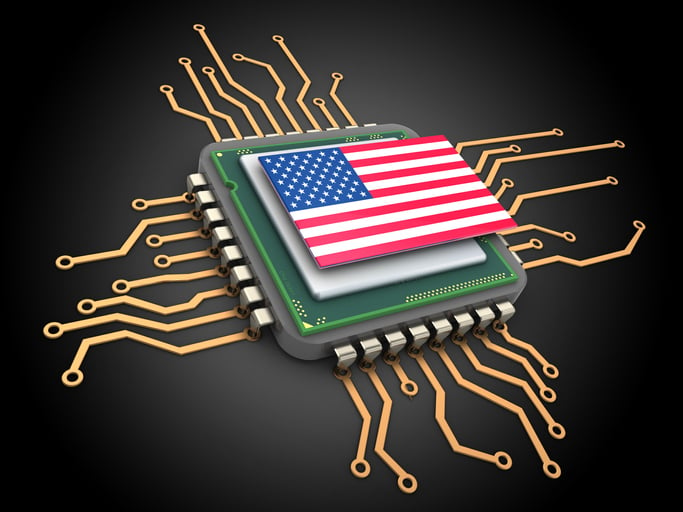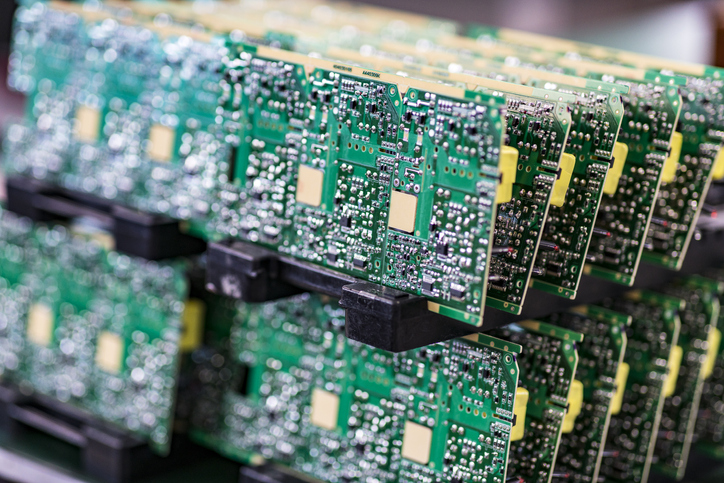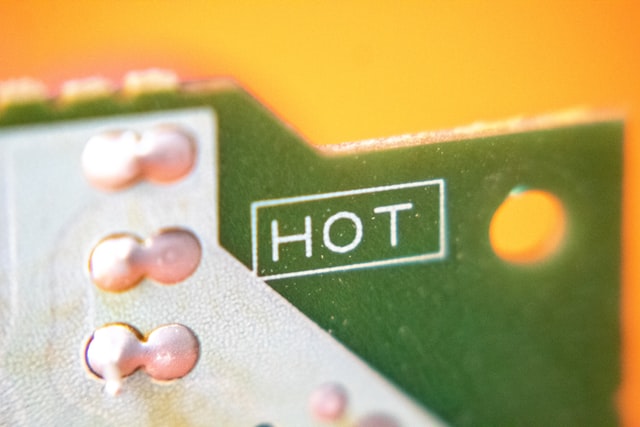Latest Advancements in Robotics & Current PCB Manufacturing Techniques
As the world of robotics advances, PCB manufacturing techniques have become faster and more efficient. With surface mount technology, flexible PCBs,...
5 min read
 Matric Group
:
May 24, 2023
Matric Group
:
May 24, 2023

The global microelectronics industry is vital to the modern economy, with over $400 billion in semiconductor sales in 2020. As the demand for consumer electronics and compact designs grows, so does the need for investment across the entire semiconductor supply chain — from domestic manufacturing to artificial intelligence.
The CHIPS and Science Act, a new piece of legislation introduced in 2020, offers benefits to businesses in the semiconductor industry, including:
For your company to reap the rewards of the CHIPS and Science Act, it's important to understand what qualifies as an eligible program under this act. Knowing who qualifies as a beneficiary, businesses can make informed decisions when it comes time to invest – and benefit from the incentives.
The CHIPS and Science Act aims to provide additional incentives to companies investing in advanced semiconductor manufacturing facilities as well as semiconductor research centers. Beneficiaries will see both direct and indirect advantages thanks to the bipartisan bill. This act will not only help foster innovation within the semiconductor industry, but also provide much-needed capital to bolster domestic production.
In addition to CHIPS providing direct financial incentives for businesses investing in new chip manufacturing facilities, it also provides a tax credit for investments in cutting-edge technologies. This includes projects related to research and development efforts as well as improved standards and technology. With this support, the U.S. semiconductor industry can continue to stay competitive on a global scale while creating jobs at home.
Analysts project that investments spurred by this act could result in up to $100 million in annual cost savings for companies investing in advanced microelectronics technologies that rely heavily on semiconductors:
There would also be positive economic growth associated with these investments, including:
By incentivizing investments in the semiconductor supply chain and supporting research into artificial intelligence, the act stands to have a lasting impact. The benefits will be widespread and those receiving them will range from manufacturers to the industry as a whole.
The CHIPS Act will have a direct impact on larger U.S. manufacturing companies. The investment tax credits will help these businesses save money and make needed investments to stay competitive in the global market. The support for semiconductor manufacturing facilities will create new opportunities for production growth, while better standards and technologies mean that manufacturers can produce higher-quality chips at a lower cost.
This in turn can:

The act also encourages research into artificial intelligence, which can lead to greater automation and more efficient processes for manufacturers. It also incentivizes innovation, which will help U.S. companies remain competitive against those from other countries in areas like process optimization and automation.
Smaller businesses will also benefit from the CHIPS Act in a number of ways. For example, the cost savings and increased efficiency resulting from better standards, technologies, and AI research can trickle down to smaller companies. They can then take advantage of these advances without having to invest in their own research and development.
Small businesses may also be able to access cheaper chips and components from larger suppliers that are incentivized by the act. This could result in lower production costs for small businesses, enabling them to produce more competitive products at lower prices. Additionally, with improvements in process optimization, small companies may be able to do more with fewer resources or personnel, thereby reducing overhead costs.
The CHIPS Act could also have a positive impact on stocks by providing greater certainty and predictability in the market. This is especially important for small companies, which often lack the resources to conduct in-depth research into the potential of new technologies. With better standards and regulations, investors can feel more confident investing their money into businesses compliant with the act.
Increased efficiency resulting from advancements in technology could bode well for stock prices in the long run if those gains are shared with shareholders. In the short term, though, companies may see their stock prices dip due to higher costs associated with implementing the new standards and regulations.
Chip-making businesses are likely to benefit the most from the CHIPS Act, as it would remove a major obstacle in their ability to access new markets and increase profitability. This could give them an edge over competitors, who may struggle to comply with the new regulations.
Product makers that rely on chips will also benefit from improved supply chain transparency and traceability, as they can more easily track goods entering or leaving their production facilities. This could help them optimize their manufacturing operations while saving costs and time in the long run.
Businesses that form part of the supply chain — such as wholesalers, distributors, or producers — could also increase efficiency thanks to better standards and regulations. They can ensure that products are compliant with safety requirements, reducing losses due to returns or reworks. Additionally, greater certainty for investors means more capital flowing into these businesses, which will further fuel their growth.
The increased efficiency brought about by the better standards and regulations could ripple throughout the supply chain, leading to improved performance and cost savings for businesses With greater certainty for financial backers, more capital will flow into the industry, giving businesses new opportunities to invest in research and development.
This in turn could lead to further breakthroughs in technology and materials. Additionally, the influx of capital can create a favorable environment for start-ups, encouraging innovation and competition.
The injection of funds into Science, Technology, Engineering, and Math (STEM) education initiatives and programs will help develop a qualified workforce to fill the growing number of positions created by the increased activity within the industry. This in turn can lead to further job growth, providing more people with meaningful employment opportunities and creating a more vibrant economy.
The global microelectronics industry is projected to continue its rapid growth, reaching a value of $1 trillion by 2030. This presents an immense opportunity for U.S. companies already taking advantage of the new legislation:
With access to cutting-edge technology and resources, these companies can position themselves to benefit from the expansion of the microelectronics industry. Moreover, these investments will pay dividends in other industries as well; for example, those that rely on components produced with microelectronics technology.
 The CHIPS Act will provide the necessary resources to allow U.S. businesses to create cutting-edge products that are domestically and internationally competitive.
The CHIPS Act will provide the necessary resources to allow U.S. businesses to create cutting-edge products that are domestically and internationally competitive.
In addition, the updated infrastructure standards mandated by the act will help U.S. producers access state-of-the-art machinery and processes, allowing them to keep up with their international counterparts.
Finally, new training initiatives funded by the law will give American workers access to resources for developing new skills and staying abreast of technological advancements. This will allow U.S. companies to remain at the forefront of production and innovation in an increasingly globalized market.
Companies had to comply with updated infrastructure standards set by the CHIPS and Science Act by 2022, while new training initiatives must be implemented by 2023. This will give businesses time to:
By 2024, American companies should be well-positioned to effectively compete in an international market.
The CHIPS and Science Act provides many opportunities for American manufacturers and electronics designers to remain competitive in the global marketplace. With ample time to invest in research and development, as well as training initiatives, businesses can make sure they are on track for the 2024 deadline.
With increased financial resources, companies can develop new products or improve existing ones that’ll sell both domestically and internationally. And by investing in well-trained staff, companies can bolster productivity and efficiency.
With new opportunities on the horizon, now is the time to streamline and improve production within your current product lines. For a better understanding of that process, consider downloading this free resource:

As the world of robotics advances, PCB manufacturing techniques have become faster and more efficient. With surface mount technology, flexible PCBs,...

The electronics sector is one of the most dynamic industries, with virtually unlimited applications. This is why its growth is expected to remain...
![[INFOGRAPHIC]: Looking for a Cable Jacket Material Comparison?](https://blog.matric.com/hubfs/cable%20jacket%20material.jpg)
Cable jackets serve as the first line of defense for wires and cables – which makes choosing the right jacketing material essential. So, you might be...